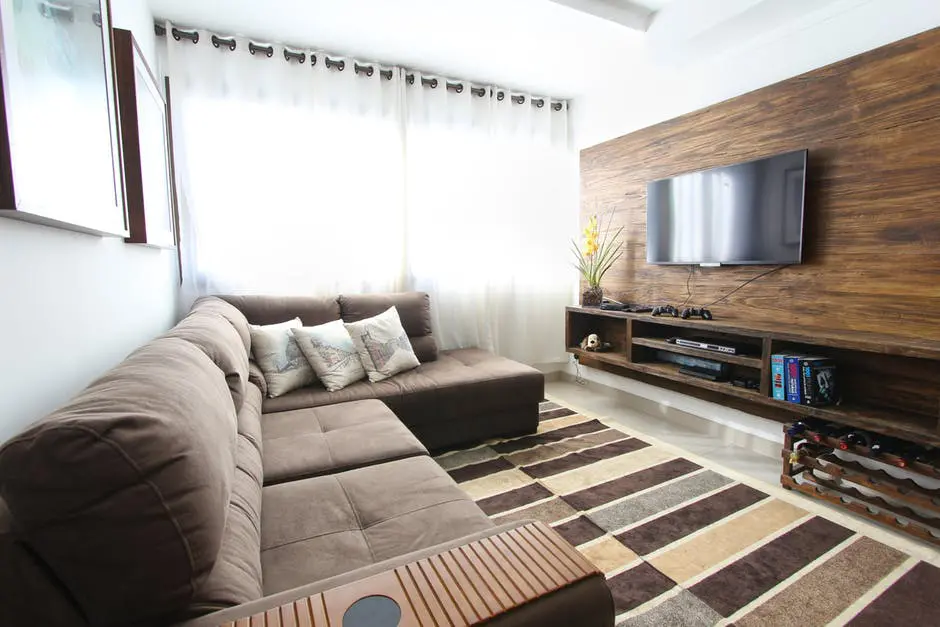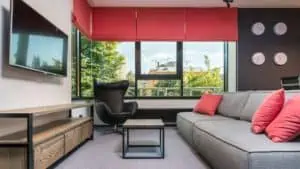Do you enjoy going to the movies? The experience can be great, but if you go see a lot of movies, it’s not very friendly on your wallet after concessions and tickets. What if you could have the experience and eat your own food at home?
You can do this if you build your own theater. While that might be expensive in the beginning and you won’t be able to see new movies, it will save you money in the long run. To help you out with this setup, here are ten tips for home theater design.
1. The Size of Your Room
First things first, you have to decide what room of your house you’re going to put your home theater in. Your first instinct may be to put it in your living room, but this might not be the best idea.
Living rooms usually mean windows which don’t mix well with theaters. There’s a reason the rooms are completely dark when you go to the movies. Windows usually produce a glare, which can take you out of a movie.
If you have a basement, that’s going to be your best bet for setting up your theater. They’re usually the right size for it and don’t have windows. You’ll also have enough room for seats and the equipment you need.
2. The height of Your Ceiling
The only problem with setting up in the basement is that the ceiling usually isn’t particularly high. The good news is that while it is nice to have a high ceiling for your theater, it’s not an absolute necessity.
If your ceiling is sort of low, opt for a LED or LCD TV instead of a screen and projector.
3. Soundproofing
Do you want to enjoy your theater without your neighbors or other people in your home hearing what you’re watching? Take measures to soundproof the room for better sound.
You can do this by installing panels or drywall and carpeting every wall in the theater. This will block out any noise and give you a non-disruptive watching experience.
4. The Screen Distance
Think about when you get front row seats at a movie theater. It can hurt your eyes and being able to see every pixel takes you out of the moment. On the flip side of that, if you sit too far away you’ll be straining your eyes to see.
It’s for this reason that you want to make sure your screen is about eight feet away from the seating area. You also want the screen to be eye level, that way you aren’t hurting your neck to watch.
5. Make Sure Your Seating is Comfortable
You won’t be able to enjoy your movie or show if you’re constantly shifting in your seat to try and get comfortable. It’s not a movie-going experience without the awesome recliners.
You’ll want to invest in quite a few of these with cup holders to complete the aesthetic. You can also consider getting some with extra storage space for a book in case you want the comfort of reading in a soundproof room.
6. The Lighting
Again, in terms of lighting, windows are a huge no go. They not only reflect light but sound as well. Make sure you don’t have any frames in the room because dialogue has the habit of echoing off of them.
If you can’t get away from having windows, block them out. If you don’t want to block them out then curtains or drapes is an idea but you’ll be moving them constantly.
7. Consider Your Wall Colors
It may be tempting to pick a color that you love for your walls, but this would be a mistake. Bright colors will bring a fun air to the room, but they also reflect light and are kind of distracting to the theater experience.
You should go for natural colors like cream or brown. These reflect way less light and aren’t as distracting.
8. How Many Surge Protectors Do You Have
Plugging your electronics into surge protectors is a must if you want to keep them safe. A sudden power outage can spell disaster for your entire home theater if they aren’t in a protector. The sudden surge could fry them.
Keep in mind that power strips don’t work the same way surge protectors do. Don’t get them confused.
9. You Should Have One Remote for Everything
It could get annoying to have to locate five or more remotes every time you want to use the home theater. It’s more convenient to only have one controller that activates everything.
When we say everything we mean everything too. You can get some that will control your thermostat and game systems too.
10. You Need a Wireless Network
Streaming services like Netflix and Hulu make it important for you to have a strong wireless network.
It’s fast, simple, and more convenient to stream your favorite movies and shows to your home theater with your laptop, phone, or Roku box if your internet is top notch.
Bring The Theater Experience Home With Good Home Theater Design
Building an immersive home theater can save you a lot of money in the long run with going to the movies. you can get the entire movie experience in your own home with a smart, and good looking home theater design. It’s a cheaper way to impress a date.
Ready to get started on your home theater? Visit our blog to see all the accessories you’ll need to get.





